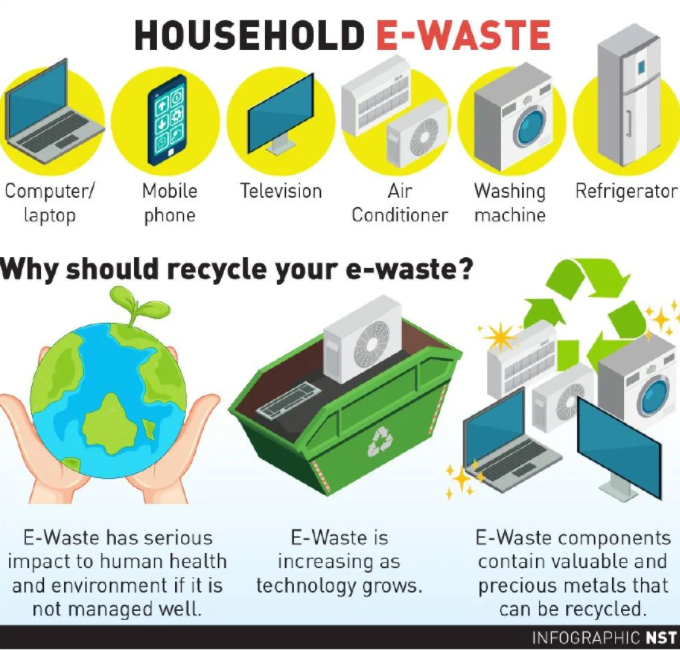More efficient disposal of e-waste nationwide
KUALA LUMPUR: The Environment and Water Ministry has proposed that the last Saturday of each month be designated as e-waste collection day nationwide, beginning January next year.
Minister Datuk Seri Tuan Ibrahim Tuan Man said this initiative is to ensure that electrical and electronic waste, or e-waste, is collected and recycled more systematically and safely.
He said it was important for everyone, from the community to the stakeholders, to work together and create networks of cooperation in the management of e-waste.
In this regard, to ensure that e-waste collected from households is handled safely and does not pollute the environment, e-waste must be collected and processed by facilities licensed by the department.
Tuan Ibrahim announced this during the National Environment Day celebrations which were held on Oct 23 and officiated by Kelantan Menteri Besar Datuk Ahmad Yakob.
The e-waste collection campaign was one of the four main highlights of the National Environment Day celebrations.
With the theme “Environment: Our Shared Responsibility”, the celebrations focused on four main programmes namely the collection of e-waste; the National River Trail Programme; reducing single use plastics and tree-planting campaigns.

E-Waste campaign
Electrical and electronic waste (e-waste) refers to damaged, unused, old / obsolete electrical and electronic equipment such as mobile phones, computers, televisions, washing machines, refrigerators and air conditioners.
E-waste is categorised as a scheduled waste with the code SW110, under the Environmental Quality (Scheduled Waste) Regulations 2005.
The Department of Environment (DOE) held an e-waste Collection Campaign from Sept 23- Oct 24 in conjunction with the National Environment Day 2020 celebration.
The campaign managed to collect 230,000kg (230 metric tonnes) of e-waste from all over the country and this number is expected to increase.
The public is urged to support this campaign by bringing their e-waste to collection centres registered with DOE. They can get more information on the centres at the DOE website at www.doe.gov.my/hhew/collection-points/.

Why does e-waste need to be reprocessed?
E-waste contains toxic and harmful substances such as lead, mercury, arsenic, cadmium, selenium, hexavalent chromium and fire insulation that have the potential to have a very serious impact on human health and the environment.
The quantity of e-waste generated from housing, commercial and institution usage is increasing and is estimated to reach 53 million pieces by 2020, which is 3.5 times higher than in 1995.
E-waste can also become a resource because it contains various types of precious metals that can be recycled. For example, television sets contain copper, iron, glass and plastic. Seventy-five per cent of TV components are recyclable to be used as raw material.

Effects of e-waste if not recycled
E-waste needs attention from all parties because it can have a negative impact on human health and is a threat to the environment.
Ingredients such as lead, mercury, cadmium, barium, beryllium and mercury found in e-waste can cause damage to the central nervous system and kidneys and stunt brain growth in children.
These toxic substances can also cause adverse effects on human health such as kidney and liver damage, nerve damage and are teratogenic, which can disturb the development of embryos and fetuses.
The mercury content in the food chain can cause chronic damage to the brain, the respiratory system and skin disease if consumed.
Source: NST




